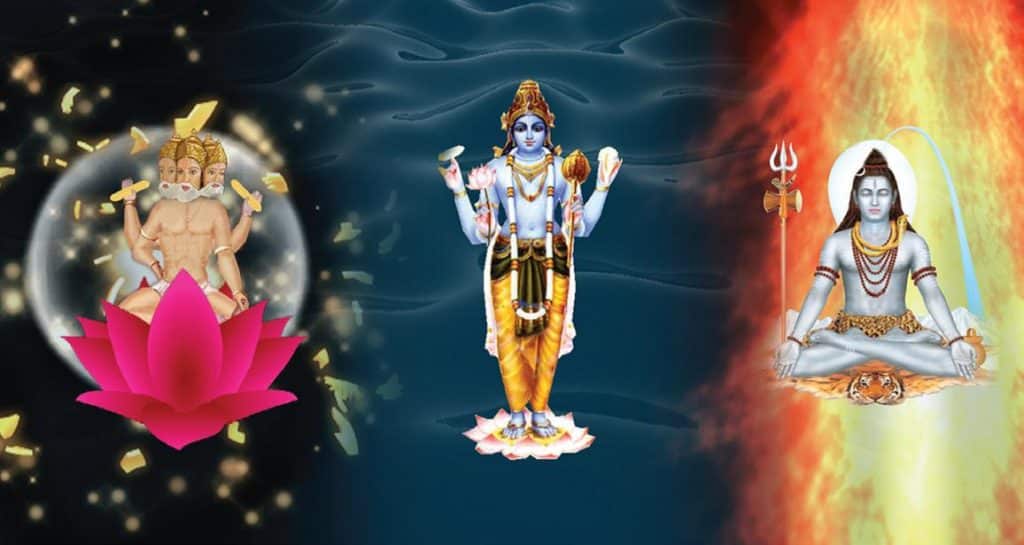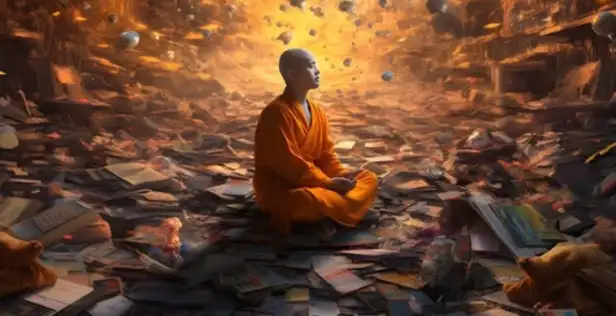In the vast and intricate spiritual tradition of Hinduism, the concept of Brahman in Hinduism stands as one of its most profound and central ideas. Brahman is not a deity or god in the conventional sense, but rather the ultimate, formless, infinite reality—the source from which all things emanate and to which they return.
Understanding Brahman is key to grasping the deeper metaphysical, philosophical, and spiritual foundations of Hindu thought.
🕉️ What Is Brahman in Hinduism?
Brahman (Sanskrit: ब्रह्मन्) is described in Hindu scriptures as:
-
Infinite and eternal
-
Unchanging and formless
-
The source and substratum of all existence
-
Beyond human comprehension and duality
Unlike the gods and goddesses (like Vishnu, Shiva, Lakshmi, etc.) who are manifestations of divine qualities, Brahman is the absolute, impersonal cosmic principle that underlies everything.
🧘♂️ Brahman in the Upanishads
The Upanishads, ancient spiritual texts forming the philosophical core of Hinduism, repeatedly emphasize the concept of Brahman. According to them:
-
“Brahman is Sat-Chit-Ananda” — Existence (Sat), Consciousness (Chit), and Bliss (Ananda)
-
“Aham Brahmasmi” — “I am Brahman,” a realization of oneness with the ultimate
-
“Tat Tvam Asi” — “That Thou Art,” expressing the unity of individual self (Atman) with Brahman
These declarations guide seekers toward the realization that Atman (the soul or self) is not separate from Brahman, but identical to it.
🌀 Nirguna and Saguna Brahman

Hindu philosophy offers two primary conceptions of Brahman:
1. Nirguna Brahman – The Formless Absolute
-
Without attributes or form
-
Pure consciousness and infinite potential
-
Preferred in Advaita Vedanta (non-dualism) by sages like Adi Shankaracharya
2. Saguna Brahman – Brahman with Attributes
-
Brahman as manifest in gods like Vishnu, Shiva, Devi
-
Allows for personal worship, devotion, and rituals
-
Central to Bhakti traditions and Dvaita/Vishishtadvaita Vedanta
Both are seen as valid ways to approach the divine—Saguna Brahman serves as a step toward realizing Nirguna Brahman.
🧩 Brahman vs. Brahma vs. Brahmin
These terms are often confused but are very different:
| Term | Meaning |
|---|---|
| Brahman | The ultimate cosmic reality or divine principle |
| Brahma | The creator god, part of the Hindu trinity (Trimurti) |
| Brahmin | A member of the priestly class in Hindu society |
Understanding this distinction is essential when studying Hindu philosophy.
📚 Brahman in Vedantic Schools of Hinduism
Several Vedantic philosophies interpret Brahman differently:
🔹 Advaita Vedanta (Non-dualism)
-
Founded by Adi Shankaracharya
-
Brahman alone is real; the world is maya (illusion)
-
Atman = Brahman
🔹 Vishishtadvaita Vedanta (Qualified Non-dualism)
-
Taught by Ramanujacharya
-
Brahman is personal (Saguna), identified with Narayana/Vishnu
-
Atman is distinct but inseparable from Brahman
🔹 Dvaita Vedanta (Dualism)
-
Advocated by Madhvacharya
-
Brahman (God) and Atman (soul) are eternally distinct
-
Focuses on devotion (bhakti) to God as a separate, supreme being
These differences show the philosophical richness and pluralism in Hinduism.
🌌 Brahman and the Cosmos
In Hindu cosmology, Brahman is the underlying essence of all creation. All physical and metaphysical entities are considered manifestations or expressions of Brahman:
-
The Universe = Brahman’s body
-
Living beings = Brahman’s soul playing different roles
-
Everything is interconnected and sacred, which underlies the Hindu principles of ahimsa (non-violence) and reverence for life.
🙏 Brahman in Practice: Realization, Not Worship

Unlike gods like Krishna or Shiva, Brahman is not worshipped directly in temples or rituals. Instead, it is:
-
Meditated upon as the ultimate reality
-
Realized through jnana (knowledge), dhyana (meditation), and vairagya (detachment)
-
Experienced in silence and inner stillness
Spiritual liberation or moksha is achieved when the soul realizes its true identity as Brahman—this state is called Self-Realization.
✨ Why Brahman in Hinduism Matters Today
In modern times, the idea of Brahman offers a universal perspective:
-
Unity in Diversity: Brahman teaches that behind all forms, identities, and differences, there is one unifying reality.
-
Inner Peace: Realizing Brahman brings detachment from ego and materialism, fostering inner peace and compassion.
-
Scientific Parallels: Concepts like quantum interconnectedness or unified field theories echo the ancient Hindu view of a singular, underlying essence.
📌 Conclusion on Brahman in Hinduism
Brahman in Hinduism is not merely a philosophical concept—it is the very fabric of existence. It transcends form and duality, encompassing the seen and unseen, the known and the unknowable. Whether through meditative silence, devotional prayer, or intellectual inquiry, the Hindu seeker journeys toward the realization that all is one, and that One is Brahman.
“Brahman is infinite. The universe is infinite. The infinite proceeds from the infinite. Taking the infinite from the infinite, the infinite alone remains.” – Isha Upanishad







